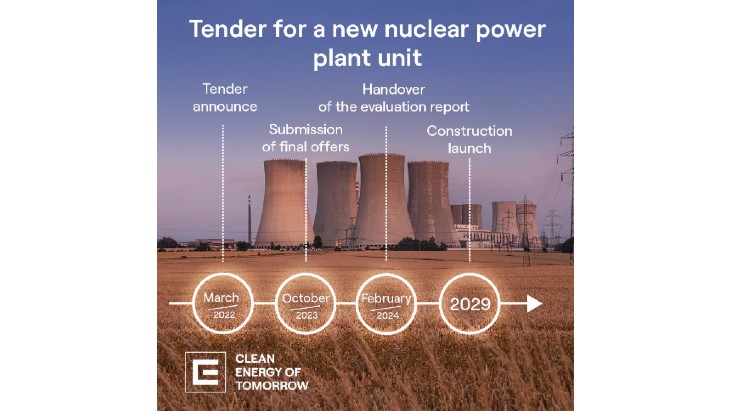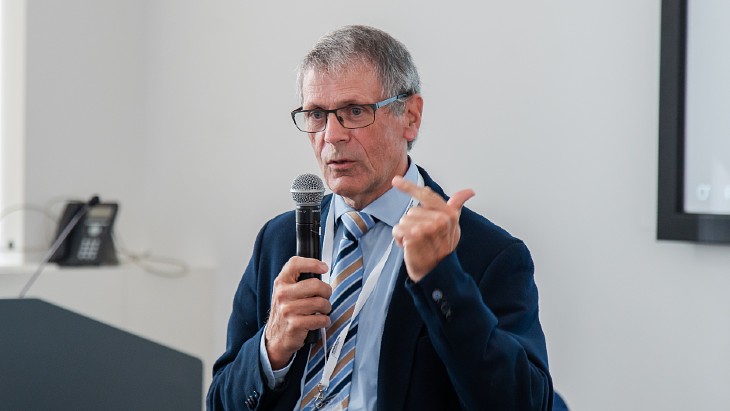Estonia nuclear preparations well organised, IAEA mission finds
30 October 2023
Estonia has developed a comprehensive assessment of its nuclear power infrastructure needs to enable the government to decide whether to launch a nuclear power programme, an international team of experts has concluded.
.jpg?ext=.jpg) (Image: IAEA)
(Image: IAEA)The International Atomic Energy Agency (IAEA) team reached its conclusion after an eight-day Integrated Nuclear Infrastructure Review (INIR) mission to Estonia, which was carried out at the request of the country's government.
Estonia's current domestic electricity generation is dominated by fossil fuels, notably oil shale. The country is seeking to reach net-zero emissions by 2050 and is looking at nuclear power as a reliable and low carbon option to diversify its energy mix by 2035 when the country plans its phase-out of domestic oil shale, according to the IAEA.
Estonia was formerly part of an agreement - with Latvia, Lithuania and Poland - to build a new nuclear plant comprising two GE Hitachi ABWR reactors near the Iganlina site in Lithuania, but the project company was wound up in 2016. Now, Estonia's plans for nuclear energy feature the deployment of small modular reactors (SMRs). A working group set up by the government in 2021 to review the nuclear infrastructure required for such a nuclear power programme is expected to finalise its report in December, providing recommendations to support governmental decision-making.
The INIR team of international experts from Brazil and the UK, as well as six IAEA staff, reviewed the status of 19 nuclear infrastructure issues using the methodology for Phase 1 of the IAEA's Milestones Approach which evaluates the readiness of a country to make a knowledgeable commitment to a nuclear power programme.
Good practices identified by the INIR team include: Estonia's commissioning of a comprehensive set of detailed studies with the support of external experts as part of its assessment to be presented to the government to support a knowledgeable decision; a strategy to support future human resource development which aims to ensure the short-term and long-term success of the nuclear power programme; and the inclusion of a review of possible locations for the geological disposal of used nuclear fuel in its assessment.
Eric Mathet, operational lead of the IAEA Nuclear Infrastructure Development Section and leader of the INIR mission said Estonia is well organised in its preparations towards a decision on launching a nuclear power programme to support its net-zero carbon transition. "During the cooperative and open discussions held over the past days, we observed the strong commitment from Estonia's highly motivated and competent professionals to developing the infrastructure needed for a nuclear power programme," he added.
Estonia now needs to finalise its comprehensive report to support the decision on a potential nuclear power programme, including with clear timelines for the major activities, the team said. It also needs to complete its plans and policies and give further consideration to the development of its legal and regulatory framework to support the next phase of the programme.
The IAEA and Estonia will now develop a workplan to provide coordinated support in line with the future development of the country's nuclear power programme.
Earlier this year, Fermi Energia selected GE Hitachi Nuclear Energy's BWRX-300 small modular reactor for potential deployment in the Baltic country by the early 2030s.
Researched and written by World Nuclear News
 (Image: ČEZ)
(Image: ČEZ).jpg?ext=.jpg)
.jpg?ext=.jpg) The inaugural international forum took place in Beijing on 28 October (Image: China Nuclear Energy Association)
The inaugural international forum took place in Beijing on 28 October (Image: China Nuclear Energy Association)_1.jpg?ext=.jpg) (Image: ElasticComputeFarm from Pixabay)
(Image: ElasticComputeFarm from Pixabay).jpeg?ext=.jpeg) The pilings in place for the new MOG facility (Image: Covra)
The pilings in place for the new MOG facility (Image: Covra) (Image: World Nuclear Association)
(Image: World Nuclear Association)






